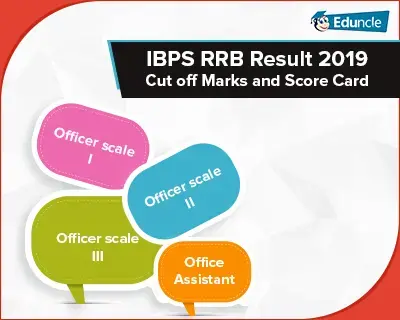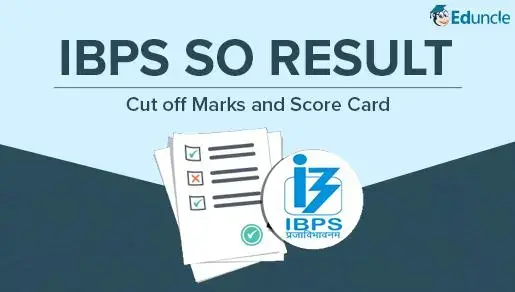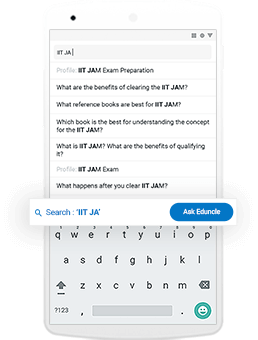
India has launched 118 satellites since 1975. Indian Space Research Organization (ISRO) is responsible for India’s Space Program.
In February 2017, ISRO has created a new record by launching 104 satellites in one go. Out of these 104 satellites, only 3 of these were Indian Satellites. These were launched by Polar Satellite Launch Vehicle (PSLV) - C37 on 15th February 2017.
Earlier, this record was set by Russia in 2014 by launching 37 satellites in a single mission. US Space Agency NASA has launched 29 satellites in one go.
ISRO launched many types of satellites. These include Indian Remote Sensing Satellites, GPS or Navigation Satellites, Spy Satellites, and Military Satellites etc.
Below in this article we have provided the complete list of India Satellites launched since 1975. So, keep reading this blog to know when and for what reason these satellites were launched.
But first look at some important facts and news regarding ISRO and Indian Satellites.
Indian Satellites: Important Facts and News Every Indian Must Know!
We must be aware of all the Indian Satellites which were launched by ISRO till date. But we don’t know the facts and news behind these launches. So, we are providing some facts and news regarding ISRO and Indian satellites.
India's Second Mission to moon "Chandrayaan-2" was launched on 22nd July 2019.
ISRO was formed by Dr. Vikram Sarabhai on 15th August 1969.
A.P.J. Abdul Kalam was the director of India’s first Indigenous Satellite Launch Vehicle (SLV-3).
The first Indian Satellite, Aryabhatta was named after an Indian astronomer and mathematician.
Prime Minister, Indira Gandhi named the first Indian Satellite as Aryabhatta.
ISRO’s Mars mission is the cheapest mission so far with just Rs. 450 Crores (Rs. 12/km).
ISRO’s mission to Mars was the only mission to reach the Mars in the first attempt.
ISRO has set a national record of launching a rocket carrying 20 satellites out of which 13 were from US.
ISRO is one of the six space agencies in the world with the capability to build and launch satellites from its own soil.
Complete List of Indian Satellites
The first Indian satellite launched was Aryabhatta. Since then, ISRO launched many satellites. So, below we have provided the complete list of Indian satellites and their uses.
| Indian Satellites | Key Features |
| Aryabhatta(19th April 1975) (Decay date: 11th February 1992) |
First Indian Satellite. |
| It was built to conduct experiments in X-ray astronomy, aeronomics, and solar physics. | |
| Bhaskara- I(7th June 1979) (Decay date: 17th February 1989) |
First Experimental Remote Sensing Earth Observation Satellite. |
| Carried Two TV cameras and Satellite Microwave Radiometer (SAMIR). | |
| Rohini Technology Payload(10th August 1979) | Contained instruments to measure the performance of the launch vehicle, SLV. |
| Rohini RS-1(18th July 1980) (Decay date: 20th May 1981) |
First Indian Satellite successfully launched by indigenous launch vehicle SLV. |
| Rohini RS-D1(31st May 1981) (Decay date: 08th June 1981) |
Carried a solid-state camera for remote sensing applications. |
| Ariane Passenger Payload Experiment (APPLE)(19th June 1981) | First Indian three-axis stabilized experimental Geostationary communication satellite. |
| Used in various experiments including relay of TV programmes and radio networking. | |
| Bhaskara – II(20th November 1981) (Decay date: 30th November 1991) |
First Indian Satellite for Earth observation from orbit. |
| INSAT- 1A(Indian National Satellite) (10th April 1982) |
First operational multipurpose communication and meteorology satellite. |
| Rohini RS-D2(17th April 1983) (Decay date: 19th April 1990) |
It was on a mission for 17 months. |
| It carried a smart sensor camera which captured 2500+ pictures. | |
| INSAT-1B(Indian National Satellite) (30th August 1983) |
Carrier twelve C and three S band transponders. |
| Eleven C-band and two S-band transponders provided nationwide TV and communications to thousands of remote villages. | |
| Provided a detailed weather and disaster-warning service. | |
| Stretched Rohini Satellite Series (SROSS-1)(24th March 1987) | It conducted astrophysics, Earth Remote Sensing and upper atmospheric monitoring experiments. |
| Conducted new and novel application-oriented missions. | |
| IRS-1A(Indian Remote Sensing-1A) (17th March 1988) |
First remote sensing satellite. |
| It was launched to develop indigenous remote sensing capability. | |
| Stretched Rohini Satellite Series (SROSS-2)(13th July 1988) | Carried remote sensing payload of German space agency in addition to Gamma Ray Astronomy payload. |
| INSAT- 1C(Indian National Satellite) (21st July 1988) |
Big Govt. agencies like All India Radio, Doordarshan, Department of Space and Indian Meteorological Department were using its services. |
| INSAT- 1D(Indian National Satellite) (12th June 1990) |
Launched for Communication & Meteorological Observations. |
| IRS-1B(Indian Remote Sensing-1B) (29th August 1991) |
Improved version of IRS-1A. |
| First Remote Sensing Satellite by ISRO using imagery generated by remote sensing technology. | |
| INSAT- 2DT(Indian National Satellite) (26th February 1992) |
It was a communications Satellite, earlier called as Arabsat-1C also known as INSAT-2R. |
| Operated initially by Arabsat and then by ISRO. | |
| Stretched Rohini Satellite Series (SROSS-C)(20th May 1992) (Decay date: 14th July 1992) |
Launched for conducting astrophysics, Earth Remote Sensing and upper atmospheric experiments. |
| INSAT- 2A(Indian National Satellite) (10th July 1992) |
First Indian Multipurpose Satellite. |
| Launched for Communication, Meteorology and Satellite based search and rescue. | |
| INSAT- 2B(Indian National Satellite) (23th July 1993) |
Second satellite in INSAT-2 series. |
| Launched for Communication, Meteorology and Satellite based search and rescue. | |
| IRS-1E(Indian Remote Sensing) (20th September 1993) |
Also known as IRS-P1. |
| Indian Experimental Earth observation satellite. | |
| Launched to develop earth imagery using instruments carried on board. | |
| Stretched Rohini Satellite Series (SROSS-C2)(4th May 1994) (Decay date: 12th July 2001) |
Identical to SROSS-C. |
| IRS-P2(Indian Remote Sensing) (15th October 1994) |
Launched to provide spaceborne capability to India in observing and managing the Natural Resources. |
| INSAT- 2C(Indian National Satellite) (7th December 1995) |
Updated version to improve communication in remote areas like Northeast and Andaman & Nicobar Islands. |
| IRS-1C(Indian Remote Sensing) (29th December 1995) |
Indian second generation Operational Remote Sensing Satellite. |
| IRS-P3(Indian Remote Sensing) (21st March 1996) |
Experimental Earth Observation Satellite. |
| Carries two remote sensing payloads, an X-ray astronomy payload and a C-band transponder. | |
| INSAT- 2D(Indian National Satellite) (4th June 1997) |
Identical to INSAT-2C. |
| Indian Satellite used for Communication. | |
| IRS-1D(Indian Remote Sensing) (29th September 1997) |
Operational Remote Sensing Satellite. |
| Similar to IRS – 1C in terms of spatial resolution, spectral bands, stereoscopic imaging, wide field coverage and revisit capability. | |
| INSAT- 2E(Indian National Satellite) (3rd April 1999) |
Indian geostationary communications and weather satellite. |
| Launched to provide communications to Asia and Australia. | |
| Oceansat-1 (IRS-P4)(26th May 1999) |
First Indian Satellite built specifically for Ocean applications. |
| Carried Ocean Colour Monitor (OCM) and a Multi-Frequency Scanning Microwave Radiometer (MSMR). | |
| INSAT-3B(Indian National Satellite) (22nd March 2000) |
Indian Satellite used for multipurpose communication like business communication, developmental communication, and mobile communication. |
| GSAT-1(GramSat-1) (18th April 2001) |
Experimental Communication Satellite for the first developmental flight of Geosynchronous Satellite Launch Vehicle (GSLV). |
| Technology Experiment Satellite (TES)(22nd October 2001) | Experimental Satellite to demonstrate and validate technologies such as attitude and orbit control system, high-torque reaction wheels, new reaction control system, etc. |
| INSAT-3C(Indian National Satellite) (24th January 2002) |
Launched to provide voice, video and digital data services to Indian and neighboring countries. |
| Kalpana-1 (MetSat)(12th September 2002) |
First Indian dedicated meteorological satellite. |
| Earlier known as MetSat-1 and renamed to Kalpana-1 in memory of Kalpana Chawla. | |
| INSAT-3A(Indian National Satellite) (10th April 2003) |
Multipurpose Geostationary satellite. |
| Launched for telecommunications, broadcasting, meteorological and search & rescue operations. | |
| GSAT-2(GramSat-2) (08th May 2003) |
Experimental satellite for the second developmental test flight of Geosynchronous Satellite. |
| INSAT-3E(Indian National Satellite) (28th September 2003) |
Communication satellite to augment the existing INSAT System. |
| Resource Sat-1 (IRS-P6)(17th October 2003) | Advanced Remote Sensing Satellite. |
| Intended to continue the remote sensing data services and also enhance the data quality provided by IRS-1C and IRS-1D. | |
| GSAT-3(GramSat-3) (EduSat) (20th September 2004) |
First Indian Satellite built exclusively to serve the educational sector. |
| Launched to meet the demand for an interactive satellite-based distance education system for the country. | |
| CartoSat-1(5th May 2005) | A stereoscopic Earth Observation satellite. |
| The satellite covers the entire globe in 1867 orbits on a 126-day cycle. | |
| HamSat(5th May 2005) | Micro satellite for providing amateur radio satellite communications to the Indian as well as the international radio operators. |
| INSAT-4A(Indian National Satellite) (22nd December 2005) |
Advanced satellite for providing television, telecommunication and broadcasting services. |
| INSAT-4C(Indian National Satellite) (10th July 2006) |
Indian Satellite used for communication. |
| It was based upon the I-2K satellites bus. | |
| CartoSat-2(10th January 2007) | Advanced remote sensing satellite carrying a panchromatic camera capable of providing scene-specific spot images. |
| Space Capsule Recovery Experiment (SRE-1)(10th January 2007) | Indian Experimental Satellite intended to demonstrate the technology of an orbiting platform for performing experiments in micro gravity conditions. |
| INSAT-4B(Indian National Satellite) (12th March 2007) |
Indian Satellite used for communication. |
| It is based upon the I-3K satellite bus. | |
| INSAT-4CR(Indian National Satellite) (2nd September 2007) |
Replacement satellite of INSAT-4C. |
| It carried 12 high-power Ku-band transponders designed to provide direct-to home (DTH) television services. | |
| CartoSat-2A(28th April 2008) | Earth observation/remote sensing satellite. |
| An Indian Military Satellite which carries a panchromatic (PAN) camera capable of capturing black and white pictures in the visible region of electromagnetic spectrum. | |
| IMS-1 (Third World Satellite– TWsat)(28th April 2008) | First Indian Satellite to use ISRO’s Indian Mini Satellite. |
| Chandrayaan- 1(22nd October 2008) | India’s first mission to moon. |
| This was a major boost as India researched and developed its own technology to explore the moon. | |
| RISAT-2(Radar Imaging Satellite) (20th April 2009) |
Indian radar reconnaissance satellite. |
| Launched to monitor India’s borders and as part of anti-infiltration and anti-terrorist operations. | |
| ANUSAT(Anna University Satellite) (20th April 2009) (Decay Date: 18th April 2012) |
Indian student research microsatellite. |
| It was designed, developed & integrated at Aerospace Engineering, Madras Institute of Technology (MIT), Chromepet, Anna University. | |
| Carries an amateur radio and technology demonstration experiments. | |
| Oceansat-2(IRS-P4)(23th September 2009) | Launched to provide service continuity for operational users of the Ocean Colour Monitor (OCM) instrument on Oceansat-1. |
| GSAT-4(GramSat-4) (15th April 2010) |
Also known as HealthSat was an Experimental Communication and Navigation Satellite. |
| First Indian Satellite to employ ion propulsion. | |
| CartoSat-2B(12th July 2010) | An Earth observation satellite. |
| Carries a panchromatic (PAN) camera capable of capturing black and white pictures in the visible region of electromagnetic spectrum. | |
| StudSat(Student Satellite) (12th July 2010) |
A CubeSat satellite designed by undergraduate students across India. |
| First Indian pico-satellite, a miniaturized satellite. | |
| GSAT-5P /INSAT-4D(25th December 2010) | Indian Satellite used for communication. |
| Intended to operate in geosynchronous orbit as a replacement of INSAT-3E. | |
| ResourceSat-2(20th April 2011) | Provides the same services as RESOURCESAT-1. |
| Designed to provide data with enhanced multispectral and spatial coverage. | |
| Youthsat(20th April 2011) | Indo-Russian scientific-educational artificial satellite. |
| Built using ISRO’s Indian Mini Satellite-1 bus. | |
| GSAT-8 / INSAT- 4G(21st May 2011) | An Indian Satellite used for communication. |
| First satellite to carry GAGAN payload. | |
| GSAT-12(GramSat-12) (15th July 2011) |
Indian Communication Satellite. |
| It is considered to be a replacement of INSAT-3B. | |
| Provides services like tele-education, tele-medicine, disaster management support and satellite internet access. | |
| Megha- Tropiques(12th October 2011) | Developed by ISRO and CNES, France. |
| Launched to study the water cycle in the tropical atmosphere. | |
| Jugnu(12th October 2011) | A Remote Sensing CubeSat satellite. |
| Operated in IIT Kanpur and was built under the guidance of Dr. N. S. Vyas. | |
| A nanosatellite used to provide data for agriculture and disaster monitoring. | |
| SRMSat(Sri Ramaswamy Memorial Satellite) (12th October 2011) |
A Nano-satellite developed by SRM University. |
| Used to monitor Greenhouse gases in atmosphere. | |
| RISAT-1(Radar Imaging Satellite) (26th April 2012) |
An Indian Remote Sensing Satellite. |
| It is the heaviest earth observation satellite launched by India. | |
| GSAT-10(GramSat-10) (28th September 2012) |
An Indian Satellite used for communication. |
| Second Indian Satellite to carry GAGAN payload. | |
| SARAL(Satellite with ARGOS and ALTIKA) (25th February 2013) |
The Satellite with ARGOS and ALTIKA (SARAL) is a joint Indo-French satellite mission. |
| It performs altimetric measurements designed to study ocean circulation and sea surface elevation. | |
| IRNSS-1A(Indian Regional Navigation Satellite System) (1st July 2013) |
First navigational satellite in IRNSS series. |
| Launched to provide a system similar to GPS. | |
| INSAT-3D(Indian National Satellite) (26th July 2013) |
Meteorological Satellite with advanced weather monitoring payloads. |
| GSAT-7(INSAT-4F) (30th August 2013) |
An Indian Military Satellite used for communication. |
| It will enable the navy to extend its blue water capabilities and stop relying on foreign satellites which provide communication services to its ships. | |
| Mars Orbiter Mission (MOM)(5th November 2013) | Also known as Mangalyaan is India’s first Mars orbiter. |
| Launched to develop the technologies required for designing, planning, management and operations of an interplanetary mission. | |
| GSAT- 14(GramSat-14) (5th January 2014) |
An Indian Satellite used for communication. |
| Expected to replace the GSAT-3 satellite. | |
| IRNSS- 1B(Indian Regional Navigation Satellite System) (4th April 2014) |
Launched to provide navigation, tracking and mapping services. |
| The satellite is powered by two solar arrays, which generate power up to 1,660 watts, and has a life-time of ten years. | |
| IRNSS-1C(Indian Regional Navigation Satellite System) (16th October 2014) |
Launched to provide navigation, tracking and mapping services. |
| Contained two payloads: a navigation payload and CDMA ranging payload in addition with a laser retro-reflector. | |
| GSAT-16(GramSat-16) (7th December 2014) |
An Indian Satellite used for communication. |
| Launched to increase the number of transponder that in turn enhance the satellite-based telecommunication, television, VSAT services in India. | |
| IRNSS-1D(Indian Regional Navigation Satellite System) (28th March 2015) |
The only satellite in the constellation slated to provide navigational services. |
| The payloads of this satellite generate navigation signals at L5 and S-band. | |
| GSAT-6(GramSat-6) (27th August 2015) |
It is a multimedia communication satellite. |
| Provides a Satellite Digital Multimedia Broadcasting (S-DMB) service. | |
| Astrosat(28th September 2015) | First Indian Satellite with multi-wavelength space observatory. |
| It enables the simultaneous multi-wavelength observations of various astronomical objects with a single satellite. | |
| GSAT-15(GramSat-15) (11th November 2015) |
Indian Satellite used for communication. |
| Launched to provide more bandwidth for Direct-to-Home television and VSAT services. | |
| IRNSS-1E(Indian Regional Navigation Satellite System) (20th January 2016) |
An Indian satellite which was launched to provide navigational services. |
| IRNSS-1F(Indian Regional Navigation Satellite System) (10th March 2016) |
The sixth out of seven in the Indian Regional Navigational Satellite System (IRNSS) series of satellites. |
| Provide navigational services. | |
| IRNSS-1G(Indian Regional Navigation Satellite System) (28th April 2016) |
The final satellite of the Indian Regional Navigational Satellite System (IRNSS) series of satellites. |
| After its launch, Indian Govt. renamed IRNSS as NAVIC (Navigation Indian Constellation). | |
| Cartosat - 2C(22nd June 2016) | An Indian Earth observation satellite. |
| Carries a panchromatic (PAN) camera. | |
| Satellite is capable of capturing minute long video of a fixed spot. | |
| SathyabamaSat(22nd June 2016) | Indian micro experimental satellite developed by students and faculty of Sathyabama University, Chennai. |
| Launched to collect data on greenhouse gases. | |
| Swayam-1(22nd June 2016) | A 1-U picosatellite developed by the students of College of Engineering, Pune. |
| First Indian Satellite launched to demonstrate passive attitude control. | |
| INSAT-3DR(Indian National Satellite) (08th September 2016) |
An Indian weather satellite launched to provide meteorological services. |
| Pratham(26th September 2016) | Indian ionospheric research satellite. |
| Launched to count electrons in the Earth’s ionosphere. | |
| PISat(PESIT Imaging Satellite) (26th September 2016) |
Remote sensing nanosatellite developed by PES Institute of Technology, Bengaluru. |
| Carries a camera which can capture images with 80-meter resolution. | |
| ScatSat-1(Scatterometer Satellite-1) (26th September 2016) |
An Indian Miniature satellite developed by ISRO. |
| Launched to provide weather forecasting, cyclone predictions and tracking services. | |
| GSAT-18(GramSat-18) (06th October 2016) |
An Indian satellite used for communication. |
| Carried 24 C-band, 12 extended C-band and 12 Ku-band transponders. | |
| ResourceSat-2A (07th December 2016) |
A Remote sensing satellite launched to continue providing the remote sensing data services. |
| CartoSat-2D(15th February 2017) | It is an Earth observation satellite. |
| It was launched with two other Indian nanosatellites (INS-1A and INS-1B) and 101 nanosatellites from other countries. | |
| With this launch, ISRO created a record of launching the most number of satellites in one go. | |
| INS-1A (ISRO Nano Satellite 1A)(15th February 2017) | An Indian Nanosatellite developed by ISRO. |
| Launched to accompany bigger satellites on PSLV. | |
| Carried two payloads: Surface BRDF Radiometer (SBR) and Single Event Upset Monitor (SEUM). | |
| INS-1B (ISRO Nano Satellite 1B)(15th February 2017) | An Indian Nanosatellite developed by ISRO. |
| Launched to accompany bigger satellites on PSLV. | |
| Carries two payloads: Earth Exosphere Lyman Alpha Analyzer (EELA) and Origami Camera payload. | |
| South Asia Satellite (GSAT-9)(05th May 2017) | A communications and meteorology satellite. |
| It was operated by ISRO for South Asian Association for Regional Cooperation (SAARC) region. | |
| GSAT-19(GSAT-19E) (05th June 2017) |
An Indian Satellite used for communication. |
| It carries a Geostationary Radiation Spectrometer (GRASP) payload to monitor and study the nature of charged particles. | |
| NIUSat(Noorul Islam University Satellite) (23rd June 2017) |
Launched by Noorul Islam Centre for Higher Education (NICHE). |
| Used for agricultural applications and facilitate higher education. | |
| CartoSat-2E(23rd June 2017) | An Earth observation satellite developed by ISRO. |
| Launched to collect high-resolution, large-scale images for use in urban planning, infrastructure development, utilities planning, and traffic management. | |
| GSAT-17(GramSat-17) (29th June 2017) |
An Indian Satellite used for communication. |
| The heaviest satellite launched by ISRO. | |
| IRNSS-1H(Indian Regional Navigation Satellite System) (02nd September 2017) |
Launched to replace the failed IRNSS-1A and complete the constellation of navigation satellites. |
| CartoSat-2F(10th January 2018) | An Earth observation satellite. |
| Almost same as previous CartoSat 2C, 2D & 2E satellites. | |
| MicroSat-TD(Microsatellite) (10th January 2018) |
An Earth observation satellite. |
| India’s 100th satellite in space. | |
| Can take pictures at night. | |
| INS-1C (ISRO Nano Satellite 1C)(10th January 2018) | An Indian Nanosatellite developed by ISRO. |
| Launched to accompany bigger satellites on PSLV. | |
| Carries MMX-TD (Miniature Multi Spectral Imager - Technology Demonstrator) payload. | |
| GSAT-6A (29th March 2018) |
A Communications Satellite operated by ISRO. |
| Also provides a platform for developing various technologies. | |
| IRNSS-1I (12th April 2018) |
It's an eighth navigation satellite to join the IRNSS series. |
| GSAT 29 (1st Nov 2018) |
It is a communication satellite developed by ISRO |
| The aim is to provide high-speed bandwidth to VRC in rural areas. | |
| HySIS (29th Nov 2018) |
HysIS is an earth observation satellite configured around ISRO’s Mini Satellite-2 (IMS-2) bus. |
| It was launched to study the earth’s surface in the visible, near infrared and shortwave infrared regions of the electromagnetic spectrum. This data will also be accessible to India's defence forces. |
|
| ExseedSat-1 (3rd Dec 2018) |
It is the India’s first privately built satellite along with 63 other satellites. |
| GSAT-7A (19th Dec 2018) |
It is advanced military communications satellite for Indian Air force. |
| Microsat-R (23rd Jan 2019) |
It was an earth observing satellite manufactured by DRDO and launched by ISRO. It was meant for military use. |
| KalamSAT-V (23rd Jan 2019) |
It was named after former Indian president Dr. A. P. J. Abdul Kalam. |
| It was built by an Indian High school student team. It is a Femto Satellite. | |
| GSAT-31 (6th Feb 2019) |
It is a high throughout telecommunication. |
| EMISAT (1st Apr 2019) |
The satellite is intended for electromagnetic spectrum measurement. It is an Indian reconnaissance satellite. |
| Chandrayaan-2 (22nd July 2019) |
India’s second lunar exploration mission after Chandrayaan-1. |
| Cartosat-3 (27th November 2019) |
An Earth Observation satellite |
| Third generation agile advanced satellite having high resolution imaging capability | |
| RISAT-2BR1 (11th December 2019) |
Radar Imaging Earth Observation Satellite. |
| Has an improved resolution of 0.35 meters |
So, we have completed this big list of Indian Satellites which was launched till date. This is the topic that every Indian must be aware of.
Questions related to this topic are also asked in the competitive exams like, SSC, UPSC, IBPS Bank Exams etc.
So, must read the complete article to gain knowledge about the Indian Satellites, their usage and launch date. Also share this article with your friends who are preparing for their competitive exams.
If you have doubts/queries regarding this article, you can comment in the comment section given below.
















